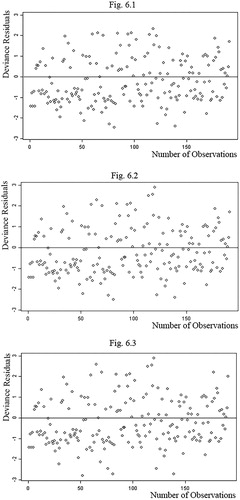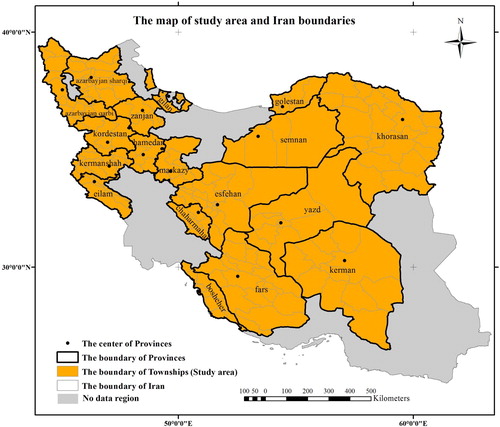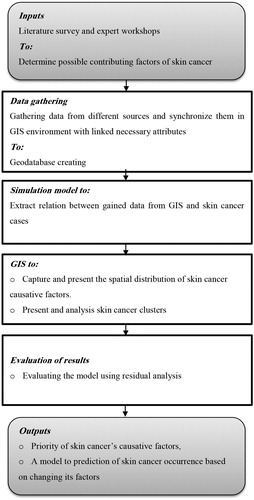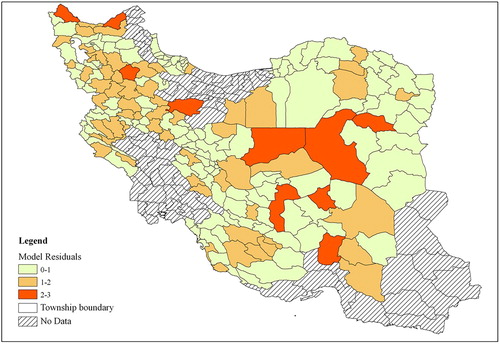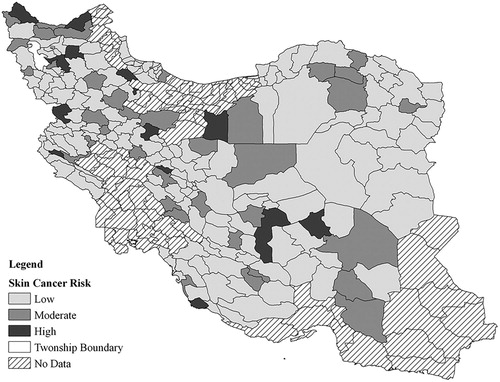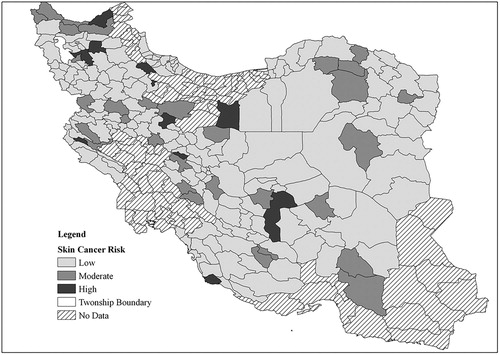Figures & data
Table 1. Causative factors of skin cancer and their spatial units.
Table 2. The considered time interval for causative factors in the model.
Figure 2. The maps of 11-yrars average of temperature, pressure, brightness sun shine hours, and humidity parameters.
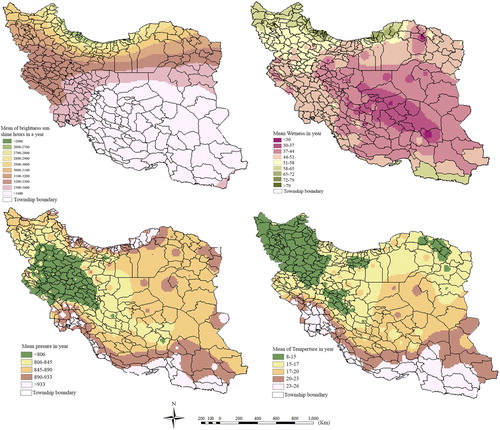
Figure 3. Long-term records of surface UV data produced by ‘Longterm Multi-Sensoral UV Record’ project.
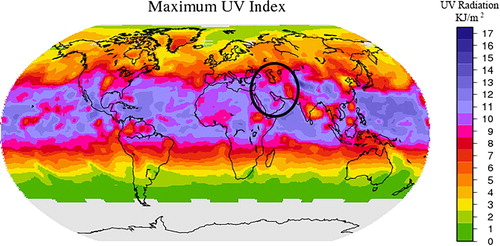
Table 3. Comparison between deviance residual of parameter selection methods.
Figure 6. Chart showing the deviance residuals of the 3 regression methods (6.1. stepwise method, 6.2. backward elimination method, and 6.3. forward selection method).
